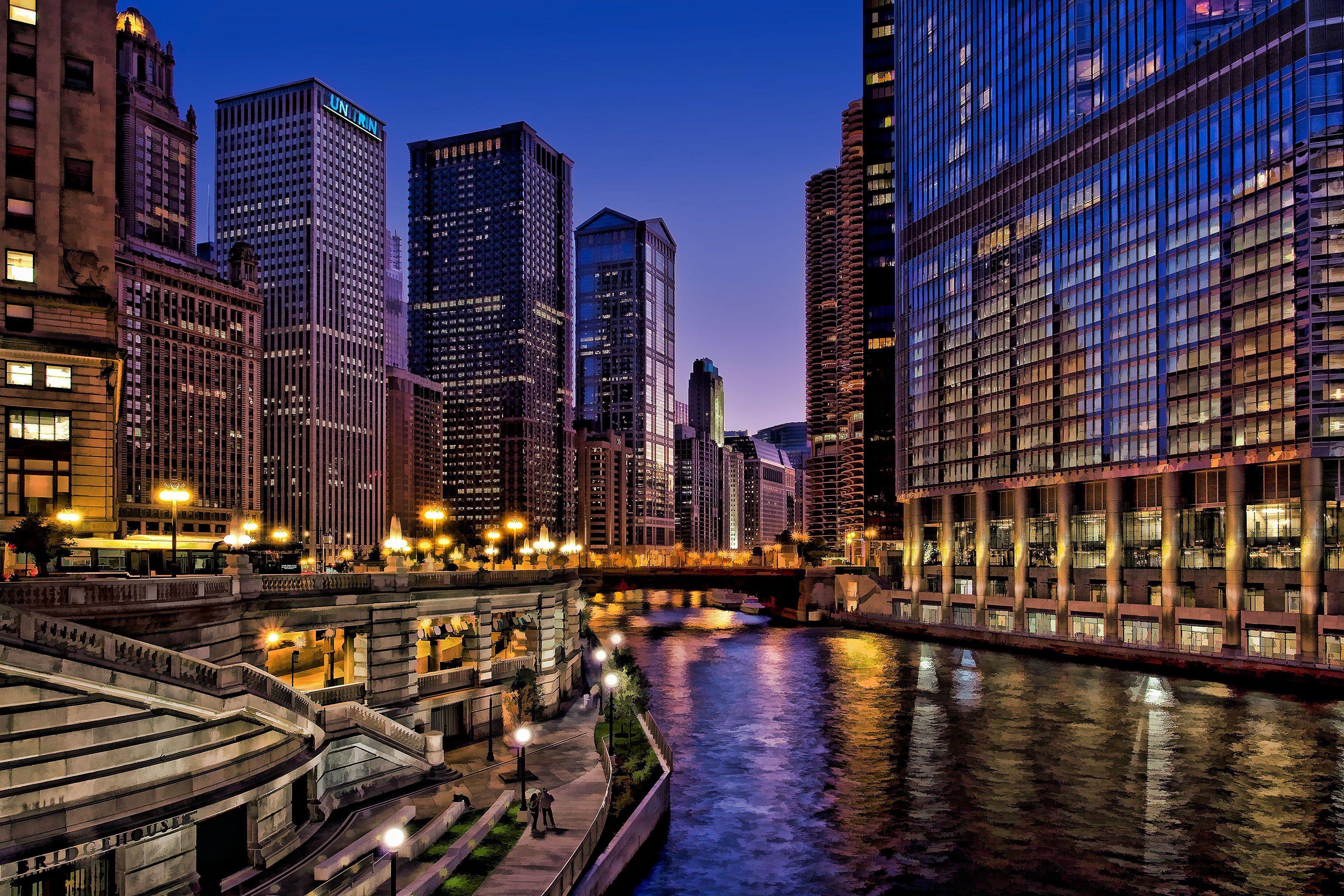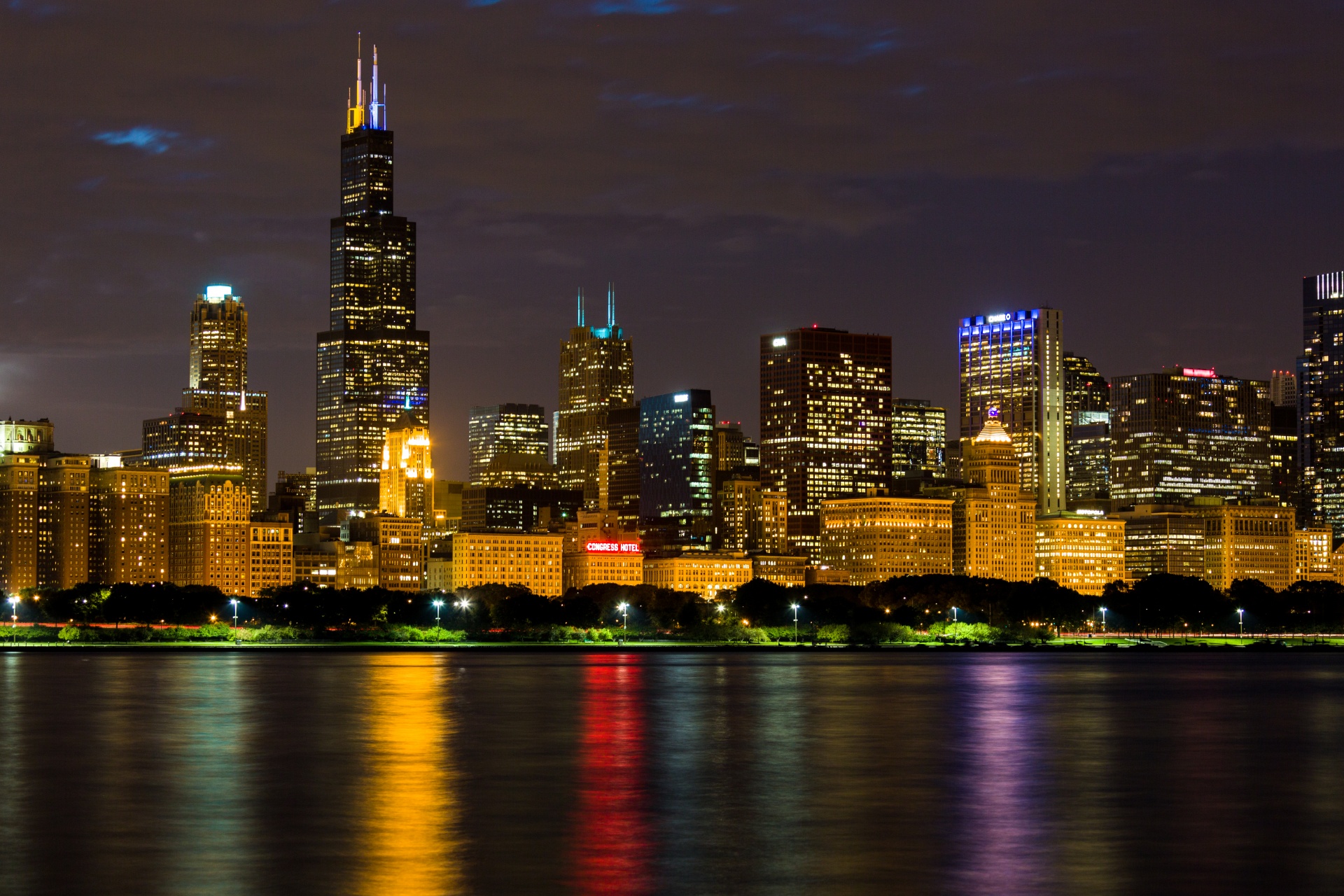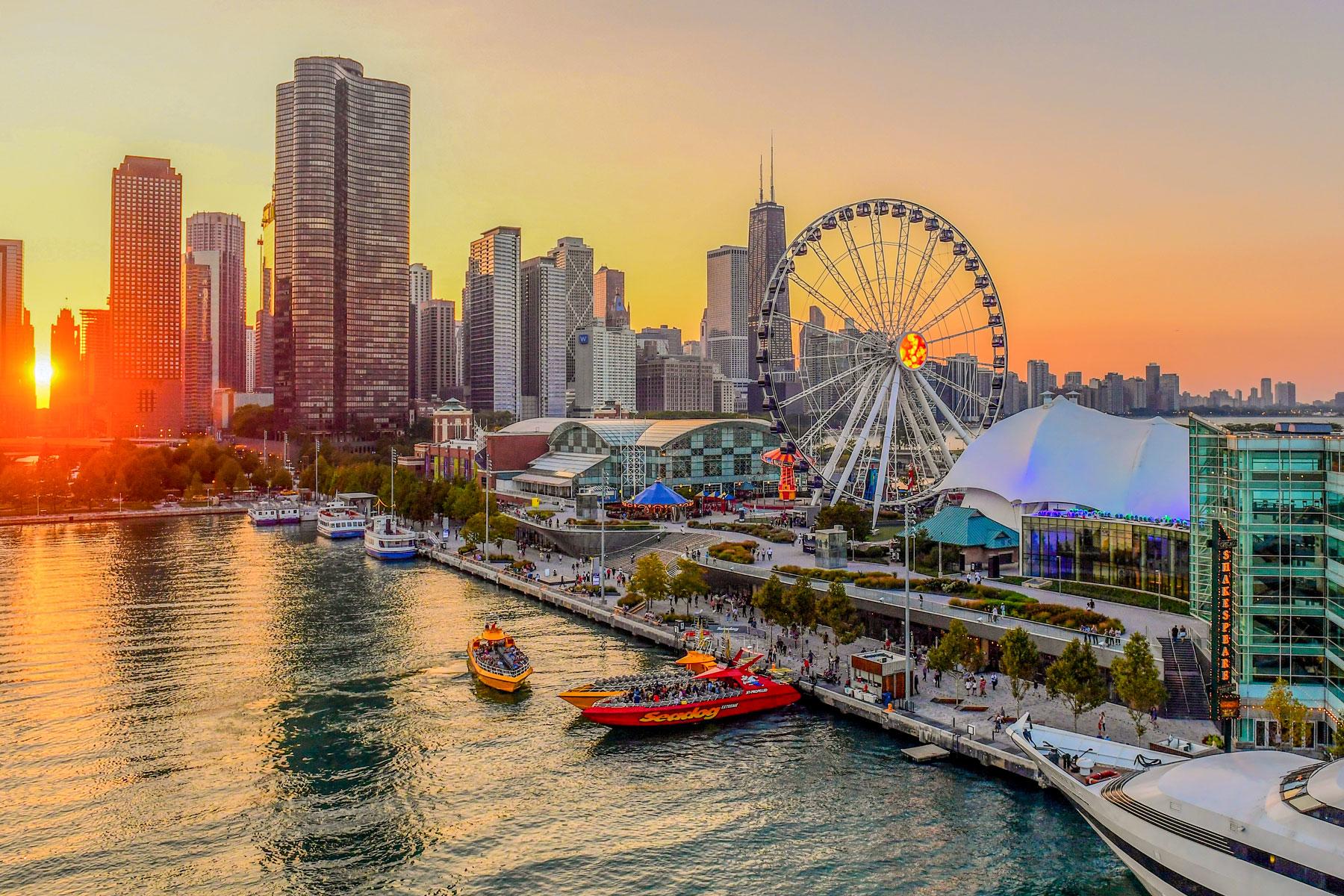Chicago, a city many people picture as a big, bustling place, certainly has a lot going for it, you know, with its famous buildings and lively vibe. But, like pretty much any big urban spot, it also faces some pretty big hurdles, too, things that really test its spirit, almost like a fire that refines it. This isn't just about the bright lights and the deep dish; it’s about the underlying strength that helps it push through.
This is a place that, in some respects, has been around for a long time, building up its character and its structures over many, many years. It's got that established feel, very much a part of a long-standing urban story, unlike some newer places where things are a bit more, well, open. You get the sense of being part of something already quite settled and quite grand, which is pretty special.
So, we're going to take a closer look at what makes this city tick, the ups and downs, the long-term plans, and how it keeps pushing forward, even when things get a little tough. It's about understanding the core of Chicago, the way it handles its challenges, and why it keeps drawing people in, as a matter of fact.
- Stars We Lost In 2024
- Who Played Todd In Breaking Bad
- Cool Runnings
- Cast Of Flight Risk Film
- Ariana Grande And Family
Table of Contents
- The Enduring Spirit of Chicago
- A Tale of Two Cities - Chicago's Economic Landscape
- Growth and Infrastructure - The Pulse of Chicago
- Long-Term Visions and Challenges
The Enduring Spirit of Chicago
Chicago, as a city, really has a lot going for it, but like pretty much any large population center, it does have some big challenges it has to deal with. These aren't just minor annoyances; they are things that really test the city's resolve and its ability to keep moving forward. It’s a bit like seeing a really strong person face something difficult, and you just know they'll find a way through it, which is sort of how Chicago feels, you know.
The city's very identity seems to be tied to this idea of overcoming things. You see it in its history, in its architecture, and even in the way people talk about it. There's a certain toughness, a refusal to give up, that seems to be woven into the fabric of the place. It’s almost as if the city itself has a kind of fiery determination, that, quite honestly, helps it keep going, no matter what.
This spirit shows up in how it handles its daily life and its bigger plans. It’s a city that builds, that plans for the future, and that seems to always be thinking about what’s next, even if the solutions aren't always quick or easy to come by. This persistence is a big part of what makes Chicago, well, Chicago, and it's something you can pretty much feel when you're there.
What Makes Chicago in Fire So Resilient?
So, what exactly gives Chicago this kind of staying power, this ability to bounce back, almost like it's been through a fire and come out stronger? Part of it comes from its deep roots and its established character. When you compare it to other places, say, some of the newer, faster-growing areas, Chicago has a long history of building up its urban areas. You're sort of stepping into a place that has been carefully constructed over a very long time, which is quite different from somewhere that's just springing up.
This established framework means there are systems and ways of doing things that have stood the test of time. It’s not about figuring everything out from scratch; it’s about refining what’s already there and adapting it for new situations. This kind of deep foundation, in a way, provides a certain stability that helps it weather various storms, whether they are economic shifts or changes in how people live. It’s like a really old tree with deep roots, you know, it can stand firm against a lot.
The people who call Chicago home also play a big part. There’s a sense of community, a shared understanding of what the city is about, and a collective desire to see it succeed. This human element, this willingness to work together and to face challenges head-on, is actually a really important ingredient in its overall toughness. It's a place where people genuinely care about their surroundings and the future of their shared space, which is pretty neat, if you think about it.
A Tale of Two Cities - Chicago's Economic Landscape
When you look at the job situation in a place like Houston, for example, its industries could probably use a bit more variety. Go figure, I think this makes it feel a little bit isolated in some ways, economically speaking. This is where Chicago, in a way, presents a different picture. While Houston might be strong in certain sectors, Chicago has, generally speaking, a wider mix of things going on, which helps it feel a bit more balanced.
There was a time, not too long ago, when a big company like BP was making decisions about some of its chemical divisions, and Houston and Chicago were actually competing to be the new headquarters for those operations. This kind of competition really shows how these two cities, while different, are both big players in the economic world. It highlights the kind of high-stakes choices that big businesses make, and how cities try to attract them, you know.
The economic story of Chicago and San Francisco, compared to places in Texas, is quite interesting. Chicago and San Francisco have really well-developed urban areas, and when you're there, you feel like you're part of an existing, long-standing urban setup. Whereas in Texas, you can be more free to do your own thing, more flexible, perhaps less constrained by what’s already been built up. This difference in approach to urban development and economic growth is pretty clear, actually.
How Does Chicago in Fire Stand Against Others?
So, how does Chicago, with its own kind of fire, stack up against other big places, especially when we consider its economic standing? Well, a Reuters link once quoted something about Texas being the state with a lot of NYSE listings, representing a huge amount of market value for their community, basically saying Texas is a really big player in the financial world. This shows that while Chicago has its strengths, other places also have their own significant economic muscle, too.
It's worth remembering that Houston and Chicago are cities that really grew and developed at different times in history. Think about it: cars were not something every family had back in 1920, not anywhere near it. And yet, Chicago had close to three million people living there in 1920. This kind of early, large-scale growth really shaped Chicago's character and its infrastructure in ways that are still evident today, giving it a certain kind of maturity, you know.
This historical difference means they approached their economic development from different starting points. Chicago built up its industries and its population centers when transportation and communication were very different, which led to a certain kind of dense, interconnected urban form. Houston, on the other hand, grew more in an age where personal vehicles were becoming common, leading to a different kind of spread-out development. These distinct paths, in a way, help explain their current economic makeups.
Growth and Infrastructure - The Pulse of Chicago
The way populations shift around is a pretty interesting topic, honestly. The Census Bureau reported that Chicago saw a bit of a comeback in its growth, too, which is a good sign. I noticed that the number of people seemed to be around the same as what it had been before, suggesting a sort of leveling out or even a slight increase after some earlier changes. This kind of movement in people, you know, it really shows how dynamic cities are, always changing and adapting.
Chicago has also been thinking about its future for a very long time when it comes to big building projects. Take the Block 37 station, for example. Chicago built that long before someone like Elon Musk was even remotely involved in the idea of an express train to O'Hare airport. This shows a kind of foresight, a willingness to plan for big infrastructure needs well in advance, which is pretty impressive, if you think about it.
These kinds of projects, whether it's building train stations or managing water, really speak to the city's ongoing efforts to support its people and its economy. They are the backbone of a big city, the things that keep everything running smoothly, or at least try to. It's about making sure the city can handle its current needs while also preparing for what’s coming down the road, which is a constant challenge for any big urban area, naturally.
What's Behind Chicago in Fire's Population Shifts?
So, what exactly causes these ups and downs in how many people live in Chicago, making it a city that, in a way, always seems to be in a state of adjustment, like a fire that's being stoked or damped down? Part of it, as we talked about, is its established nature. People are drawn to places that have a strong sense of identity and a long history, places where there's already a lot going on. This draws some people in, while others might look for something a bit newer, or perhaps less established.
Economic opportunities also play a big role. When jobs are available and industries are doing well, people tend to move to those areas. Conversely, if certain industries shrink or change, people might look elsewhere. It’s a very practical decision for many families, you know, where they can find work and build a life. So, the city's ability to attract and keep different kinds of businesses is actually pretty vital for its population numbers.
Then there's the quality of life, too. Things like schools, safety, parks, and how easy it is to get around all factor into people's choices about where to live. Chicago, with its long-standing infrastructure and cultural offerings, provides a certain kind of urban experience that appeals to many. But, like any big city, it also has its challenges in these areas, which can influence who decides to stay or who decides to move on. It’s a pretty complex dance, really, between all these different factors.
Long-Term Visions and Challenges
Chicago has some really big, long-term projects that show its commitment to the future, even if they take a very, very long time to finish. Take the Chicago version of what's officially called TARP, but everyone just calls it the Deep Tunnel. This project has been worked on for fifty years now. That's a really long time, and it tells you a lot about the scale of the challenges the city faces, and how it approaches solving them. You just shouldn't expect a quick solution when it comes to something like that, honestly.
This kind of project, which deals with managing water and preventing flooding, is a massive undertaking, and it speaks to the city's willingness to invest in its fundamental systems, even if the work is slow and steady. It’s not flashy, but it’s absolutely essential for the city's long-term health and its ability to keep growing. It shows a kind of patient determination, a steady fire, you know, that just keeps burning.
The fact that something like the Deep Tunnel has been under construction for so long also highlights the kind of persistence that's needed to manage a city of Chicago's size and age. These aren't simple fixes; they are huge engineering feats that require generations of effort and commitment. It’s a reminder that building and maintaining a big city is a continuous process, never really finished, but always being worked on, in a way.
Can Chicago in Fire Tackle Its Biggest Projects?
So, with these huge, long-running projects, can Chicago, with its enduring spirit, really manage to get its biggest undertakings done? The Deep Tunnel is a prime example of a challenge that requires an incredible amount of sustained effort. It’s not just about money; it’s about coordination, engineering, and a long-term vision that spans decades. The very fact that it's been going on for so long shows both the difficulty of the task and the city's commitment to seeing it through, eventually.
These kinds of projects, whether it’s dealing with water management or improving transportation, are really about making the city a better place for everyone who lives and works there. They are investments in the future, even if the immediate benefits aren't always obvious. It’s about building a stronger foundation for the city, so it can continue to thrive, even as things change around it. This is a very practical side of Chicago’s enduring nature, actually.
Ultimately, the ability of Chicago to tackle these big projects comes down to its collective will and its capacity for long-term planning. It’s not always easy, and there are certainly hurdles along the way, but the history of the city suggests a strong inclination to keep pushing forward, no matter how long it takes. It’s a city that, in a way, understands that some of the most important work takes time, and that real solutions are rarely quick fixes, as a matter of fact.
- Chick Fil A Waffle Fries Going Away
- Jd Vance Dad
- Anthony Robles Movie
- Avan Jogia Movies And Tv Shows
- Tracee Ellis Ross Husband


